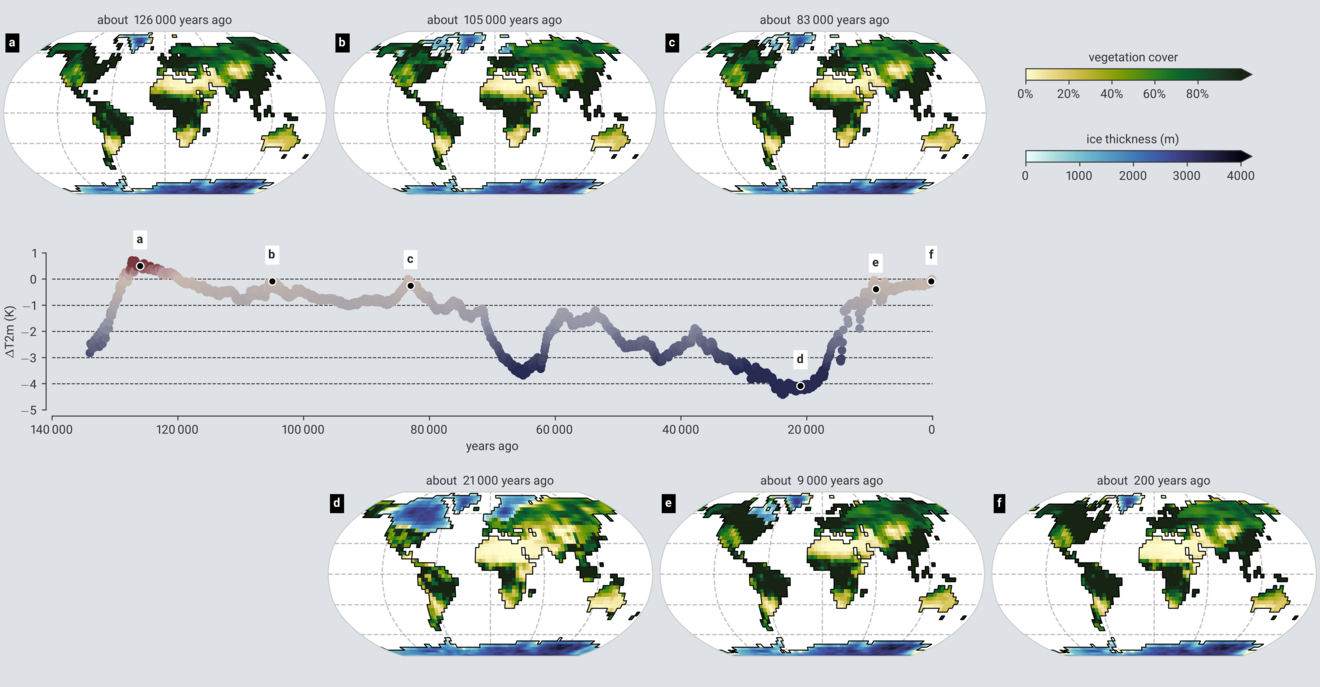Recurring cases of Saharan and Sahelian greening over the past 800,000 years
Today, the Sahara is known as the largest hot desert on Earth, and the Sahel, a climate transition zone to its south, is frequently hit by droughts. But these climatic conditions have only prevailed for the past approximately 4000 years. Before that, the region was much greener than today for several thousand years, sustaining vast river networks with lush vegetation, wildlife, and prehistoric settlements. This doesn’t represent a unique occurrence in Earth’s history: African Humid Periods (AHPs) have occurred quasi-periodically over the past 11 million years, mainly following the natural variations in Earth’s orbit around the Sun. Mateo Duque-Villegas, a researcher at the Max Planck Institute for Meteorology (MPI-M), and his colleagues have simulated the AHPs of the last 134,000 years and developed a statistical tool that allows for predicting the occurrence of AHPs over the last 800,000 years.

Hints from sediments and simulations
Looking this far into Earth’s past typically requires data from either geological records or from simulations. The former is retrieved, for example, from sediments at the bottom of lakes or the ocean, which contain information about the climate at the time when they were deposited. And indeed, AHPs are identifiable in marine sediment records off the African Atlantic coast – for example, as reduced dust input from the Sahara onto the Atlantic Ocean. However, the related vegetation changes on land are difficult to reconstruct, because comparable data from the continent is scarce.
The second window into the past is provided by simulations from climate models. However, limitations in computing capacity require a compromise between model complexity, simulation length, and spatial resolution, which limits the amount of detail that can be reproduced and evaluated as well as how far back in time the simulation can go.
A window into the distant past
Duque-Villegas and his colleagues at the MPI-M and the University of Hamburg have used the MPI-ESM, a comprehensive Earth system model developed at the MPI-M, to simulate the entire last glacial cycle, that is, the past 134,000 years. Performing the simulations took 440 days on the supercomputer Levante at the German Climate Computing Center.
The four simulated AHPs during the past 134,000 years are in broad agreement with the few available marine records, especially in terms of timing and relative strength. The analysis shows that during all of these AHPs, both the Sahel and parts of the Sahara were much greener than today, though the northeastern parts of the Sahara remained desert.
Based on this simulation, the researchers found that the vegetation pattern in Northern Africa can be reasonably well predicted by a statistical combination of known climate forcing variables, mainly the variations in the Earth’s orbit around the Sun and, to a lesser extent, the amount of greenhouse gases in the atmosphere as well as the waxing and waning of the northern ice sheets.
Using this statistical relationship, the authors estimated northern African vegetation patterns for the last eight glacial cycles or 800,000 years. In agreement with previous studies, they identified up to 21 AHPs during that time period, showing that this approach provides a useful diagnostic tool for the distant past. However, the researchers also point out that this scaling has limitations: When extending the climate simulation several millennia into the future, the statistical relation between climate forcing and vegetation pattern changes because anthropogenic greenhouse gases become the dominant driver of climate change.
More information
Animation: Global vegetation patterns during the last glacial cycle
Original publication
Duque-Villegas, M., Claussen, M., Kleinen, T., Bader, J. & Reick, C. (2025). Pattern scaling of simulated vegetation change in North Africa during glacial cycles. Climate of the Past, 21(4), 773-794. doi:10.5194/cp-21-773-2025
Contact
Dr. Mateo Duque-Villegas
Max Planck Institute for Meteorology
mateo.duque@mpimet.mpg.de

